
ABSTRACT: After finishing the study of Web-based reference linking, Herbert Van de Sompel further refined his research results and developed the OpenURL framework in 2000. Today, this framework has become an international standard widely adopted by the electronic scholarly publishing community. Services built on this standard are taking users seamlessly and instantaneously to full-text articles regardless of which databases they reside in as long as users are authenticated successfully via a subscription login process. In addition, extended OpenURL-based services are continuously evolving. One of the services, article linking, even allows users to directly query multiple databases to retrieve the desired full-text articles without the need to log into individual databases. OpenURL-based services have thus far proven to be a great tool for improving full-text article access. In fact, many have become standard features that must be included in electronic journal subscriptions. This paper will attempt to (1) provide some background information about OpenURL framework development, (2) describe how OpenURL has been used, particularly by the electronic scholarly publishing community, (3) explain the benefits that OpenURL brings to library users of electronic resources, (4) demonstrate how OpenURL-based article linking services can improve access to full-text articles using EBSCO Publishing’s LinkSource service, and (5) discuss the current linking service problems and provide an overview of OpenURL’s ongoing development.
OpenURL stands for Open Universal Resource Locator. The standard was based on research results published by Van de Sompel and Beit-Arie (2001a; 2001b). Their work described technologies that could package an OpenURL consisting of source metadata and other essential information on the fly, and then transport such a package over the network in order to retrieve targeted objects – for instance, full-text articles. In essence, this standard describes the automatic generation of an actionable URL (i.e., metadata of the source object), the delivery of the packaged data to a remote resolution host called the resolver, and the execution of actions by the resolver based on the packaged data. These actions include data interpretation, knowledgebase look-up, and the return of results. Figure 1 depicts the flow of OpenURL resolution. After publication, this de facto standard attracted many enthusiastic scholarly publishing companies, library system stakeholders, and library professionals.

Since the standard emerged, many issues and new ideas have come to surface. The National Information Standards Organization (NISO) formed a committee in May, 2002, and held discussions to develop a formal standard. After two years of public review and trials, OpenURL 1.0 was finally approved in March, 2005, and ANSI/NISO Z39.88-2004 became its official name. The standard is now accessible at http://www.niso.org/standards/resources/Z39_88_2004.pdf?CFID=30588401&CFTOKEN=13339642.
This new version resolved many issues inherent to a context-sensitive environment that were not addressed in the previous version, such as user and object context data. New genres, new types of metadata formats, version control, and new syntax identifiers for describing context were added. Table 1 is a comparison of objects and metadata formats that can be transported in the two versions (Pesch, 2004). In addition, a San Antonio Profile (SAP) was created specifically for the scholarly information community to use. These additions have made this standard more robust and more dynamic. Beyond that, the standard’s extensibility was also improved to create more room for development of innovative applications. COinS (ContextObject in Span) and Autodiscovery are two such applications that benefited from this (Hellman, 2005; Chudnov and et al, 2005; Grogg, 2006b).
| Table 1: Genres and Metadata Formats in OpenURL 0.1 vs 1.0 | |
|---|---|
| OpenURL 0.1 | OpenURL 1.0 |
| 1. Genres | |
|
|
| 2. Metadata Formats | |
|
|
Furthermore, the available extended services have also been expanded. Below are examples of such services that have been used by many libraries via the OpenURL resolution intermediary menu (Needleman, 2002; Walker, 2003; Grogg, 2006b):
Links to encyclopedia articles, reference works, biographies, and digital objects are also possible (Aaron, 2006).
Most importantly, the new standard opens up opportunities for other communities to develop applications using this technology. Google Scholar’s OpenURL project is a good example. Interested readers can consult Pesch’s presentation (2003) to get a quick overview of how OpenURL works.
These three benefits are significant and attractive to library users. In this way, the link resolver has definitely improved electronic database access and saved users much time and effort. "Patrons are the big winners," said Amira Aaron at the 2006 NESTL Annual Conference about the impact of SFX OpenURL technology on Harvard University’s libraries.
In 2000, Ex Libris’s SFX was the sole commercial OpenURL link resolver on the market. By 2003, the number of link resolvers had increased to at least 10, in addition to systems developed in-house. Today, the number is 13 (see Table 2). Although this increase may seem modest, the customer base has expanded tremendously. Table 2 shows the customer count for the 13 link resolver providers surveyed in 2004 (Ferguson and Grogg) and 2006 (Singer). SFX, with the largest customer base, had 847 customers by June, 2005 (Grogg, 2006a, p.2).
| Table 2: 2004-2005 OpenURL Resolver Vendors and Customers | |||
|---|---|---|---|
| Company | Link Resolver Name | # of Customers in 2004 | Date Introduced |
| CSA | Ulrich’s Resource Linker | unknown | January 2005 |
| EBSCO | LinkSource | 56 | March 2003 |
| Endeavor Information Systems | LinkFinderPlus | 145 | August 2002 |
| Ex Libris | SFX | 637 | May 2000 |
| Fretwell-Downing Informatics | OL2 | 11 | December 2002 |
| Geac Library Solutions | VLink | 5 | September 2002 |
| Innovative Interfaces | WebBridge | 130 | October 2002 |
| Openly Informatics | 1Cate | 37 | June 2001 |
| Ovid Technologies | LinkSolver | 130 | October 2003 |
| Serial Solutions | Article Linker | 150 | April 2003 |
| Sirsi Corp. | Sirsi Resolver | 11 | April 2003 |
| Simon Fraser University Library | GODOT/CUFTS (open source) | unknown | 1997/2002 |
| TDNet | TOUR | 40 | January 2003 |
| Total: | 1,352 | ||
In the meantime, the number of electronic databases that allow inbound and outbound linking through third party OpenURL link resolvers is growing as well. A list of the 20 database vendors used by Bridgewater State College’s Maxwell Library is included in Appendix. LexisNexis, one of the most popular databases, just became OpenURL-compliant in October, 2006. It is conceivable that more database vendors will follow suit sooner or later to take advantage of this technology to improve user access.
In addition, more features are appearing constantly. By 2004, most link resolvers supported the following features:
By 2005, most link resolvers were supporting new features such as requests for multiple context objects, target and source updates, interface personalization, API or XML interface support, and holdings export to Google Scholar, in addition to existing features.
Figures 2 and 3 show different intermediary menu implementations of the SFX resolver by two different institutions (Araron, 2006). Each includes extended services such as linking to Web search engines, citations export to RefWorks, information lookups in Ulrichsweb, and library catalog and InterLibrary Loan service linking.
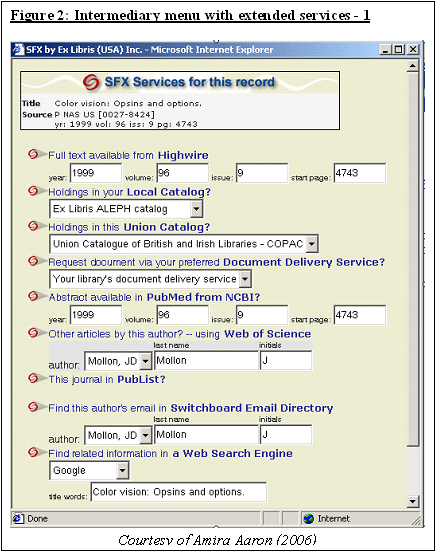
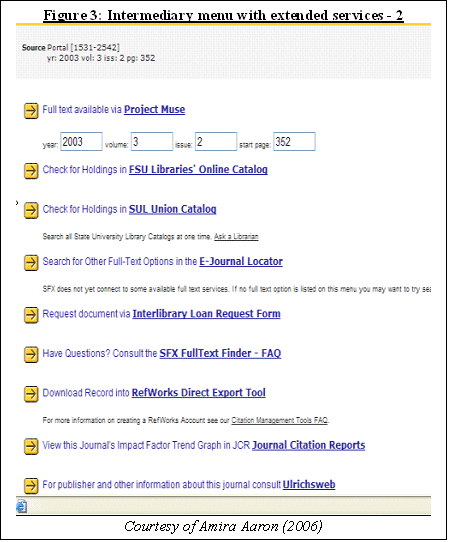
Figure 4 shows a citation linker that allows users to search known citations.
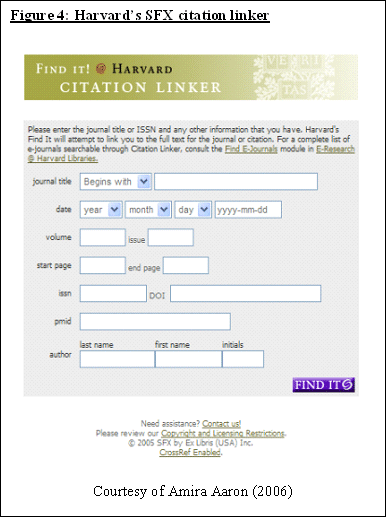
LinkSource provides the following basic features:
When the full-text article for a citation is not available on the search result list, a user can click on the LinkSource icon, as shown in Figure 5.
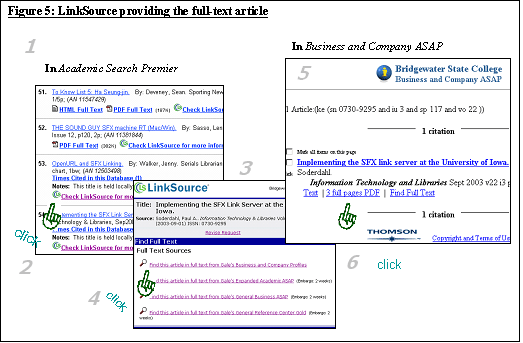
The LinkSource icon will then bring up a list of databases that contain the article that the user is looking for. At this point, the user only needs to click on any one of the links on the menu to move into the selected database. Once in the selected database, the user can click on the full-text article link to bring up the article to the desktop to read immediately. However, for some databases, linking to full-text articles is more straightforward; such databases provide direct links to full-text articles (see Figure 6).
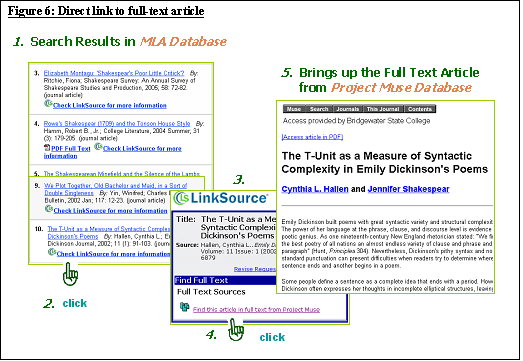
When an article is available only in print, the LinkSource will provide two hyperlinks: one will point to the library catalog and the other will point to InterLibrary Loan requests, as shown in Figure 7.
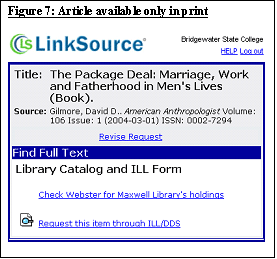
The link to the library catalog will bring up the bibliographic record of the journal that contains the targeted article. A user can find the holdings information from the record to determine whether the desired issue is available in the library or not. If not, they can close the bibliographic record window and click on the InterLibrary Loan request link to obtain their articles from other institutions.
When a full-text article cannot be found in any databases and any of the library’s print journals, an InterLibrary Loan request link will be provided, as shown in Figure 8. Bridgewater State College is using the ILLiad system for its InterLibrary Loan and document delivery services. When users click on the InterLibrary Loan link, they are prompted to log in. Once they successfully log in, the article data will be automatically transferred to the article request form. Users do not need to type a word – they can simply click the Submit button to request the article. The request will be sent to ILLiad for further processing.
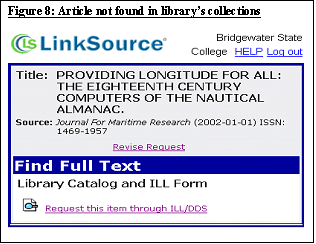
Figure 9 shows LinkSource’s citation finder. Users can click on the citation finder’s link on the library’s home page and fill in information in several required fields, and then click on the Submit button. The citation finder then returns search results to the user. If the desired article is available in any of the library’s databases, it will immediately appear on the user’s desktop.
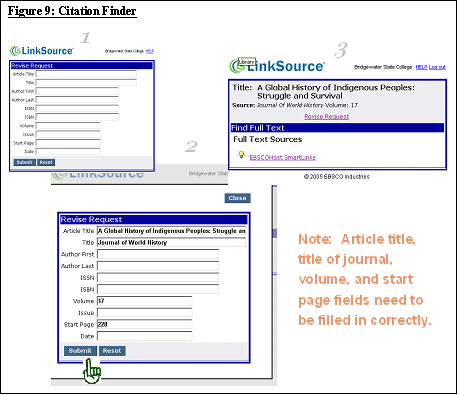
"We love it! And at the same time, we hate it when it doesn’t work," expressed a local link resolver user at the Charleston Conference (Hamaker, 2005). Although this frustration resulted from insufficient metadata support, it can also result when linking does not work – for example, when incorrect data is entered in the knowledgebase. When the bibliographic data packaged in the OpenURL frame does not match any entries in the knowledgebase, the link resolver will not respond properly. Incorrect data input seems to be a very common problem in using both local (Fick, Duncan, and Walsh, 2005) and hosted resolvers. In the case of the Bridgewater State College, many dead links were discovered since LinkSource was implemented. These have been reported to EBSCO. Fortunately, EBSCO has taken this problem seriously and responded effectively. Another potential source of frustration is the fact that not all electronic databases are currently OpenURL compliant. Therefore, library users cannot fully enjoy the benefits of OpenURL technology yet. We can only hope that this situation will change for the better soon.
Since the new standard was officially approved, many innovative applications have been developed and many more are under development (Grogg, 2006b and 2006c). In addition to COinS and Autodiscovery mentioned earlier, there are other OpenURL applications, including OCLC’s Registry of OpenURL (Carney, 2005), the United Kingdom-based OpenURL Router (JISC, 2004), Google Scholar’s OpenURL linking project, RSS feeds for new journal issues (Zetoc, 2006), applications for personalizing OpenURL linking services, citation harvesting applications, and applications that allow access to digital objects in repositories. Still, the most profound spirit of this new standard is that it is not just a standard for the scholarly information community, but it is also a standard for the other networked communities, such as "from retailing to real estate, where context-sensitive services are important." (NISO, 2005) Google Scholar’s OpenURL linking project is the first step toward that ideal.
With current trends, OpenURL technology will undoubtedly continue to change the landscape of electronic resource services provided by libraries. Indeed, OpenURL is a "linkalicious" (Schneider. 2001) technology; it is "Magic" (Briden, 2001); and it is "fun" (Crawford, 2002).
| Chang, Sheau-Hwang. (2007). Full-Text Article Linking: Where Are We Now? Chinese Librarianship: an International Electronic Journal, 23. URL: http://www.iclc.us/cliej/cl23chang.htm |